Simplify Mainframe Management with GenAI: Insights from BMC
Dave Jeffries and Priya Doty, vice presidents at BMC Software, join our hosts to share their insights on harnessing Generative AI within BMC's AMI Assistant to revolutionize mainframe management.
Gen AI meets mainframe management on this episode of Six Five Media at BMC Connect. Hosts Steven Dickens and Mike Vizard are joined by BMC Software's Dave Jeffries, Vice President of R&D for ZSolutions, and Priya Doty, Vice President of Solutions Marketing BMC AMI, for a conversation on simplifying mainframe management with the generative AI capabilities of BMC AMI Assistant.Their discussion covers:
- The BMC's Statement of Direction for Generative AI in cloud environments within the BMC AMI Platform and the role of BMC AMI Assistant as a pivotal advancement
- Addressing the expertise gap in mainframe management through the BMC AMI Assistant
- The application of Generative AI in automating routine tasks and its impact on productivity by allowing staff to concentrate on more strategic initiatives
- An exploration of how the BMC AMI Platform and Assistant synergize to enhance efficiency for mainframe experts and accelerate innovation
Learn more at BMC Software.Watch all of our coverage at Six Five Media at BMC Connect, and be sure to subscribe to our YouTube channel, so you never miss an episode.
Steven Dickens:
Hello and welcome to another episode of the Six Five On The Road coming to you from BMC Connect. My name is Steven Dickens, and I'm joined by my co-host here, Mike Vizard, and we've got Dave Jeffries and Priya Doty on the show. Welcome to the show.
Dave Jeffries:
Hello. Thank you.
Priya Doty:
Thank you, Steve. Thank you, Mike.
Steven Dickens:
So let's get started. Tell us a little bit about your role and what you do. We'll go to you first, Priya.
Priya Doty:
Yeah, sure. Priya Doty. I am Vice President for Solutions Marketing for BMC's AMI portfolio.
Dave Jeffries:
So Dave Jeffries. I'm the Vice President of Research and Development for BMC's AMI portfolio.
Steven Dickens:
So I've got to ask, I hear it a lot, we've heard it this week, AMI. Priya, what does that mean from the way you're structured internally within BMC, but also what does that mean as it manifests for your clients?
Priya Doty:
Yeah. Well, AMI is A-M-I, which stands for Automated Mainframe Intelligence, and actually, we created that brand back in 2019, before my time here, but what I love about that brand is it was started around mainframe software and making it more intelligent, using the latest AI, ML technologies at the time. Fast-forward now five years later to 2024 and AMI still has so much relevance, right? Because it's Ask AMI, Ask AMI Assistant with GenAI, so we're continuing to talk about our mainframes, our mainframe solutions, our mainframe software as BMC AMI.
Steven Dickens:
So you touched on it there and I'll take you there first, Dave, AMI as a platform. We've seen a lot of announcements this week, AMI Assistant, there's the stuff going on in the DevOps space, there's the stuff in the AIOps space. Can you just tell me and help the viewers with Platform versus Assistant and what kind the delineation points between those are?
Dave Jeffries:
Absolutely, absolutely, Steve. So AMI Platform that we announced Statement of Direction in July is a big area. It encapsulates many different aspects of really treating the platform as kind of a cloud native way. One of those features and capabilities is our generative AI services. Generative AI services is infusing the AMI Assistant. AMI Assistant is the GenAI capability that will assist you infused in every one of the products on your journey through operations, through security, through data, through DevX, et cetera. But AMI Platform itself is a whole set of services. GenAI is just one of them. You can imagine things like discovery services, data services, feeding restful services, et cetera, authentication services. There's a whole bunch more to come. This is really just the first piece of the entire platform starting to be delivered.
Steven Dickens:
So if we think of Platform as the overarching and then the Assistant's plugging into it, is that kind of a way to frame it?
Dave Jeffries:
Yeah. Yeah, absolutely. Good way to think about it.
Mike Vizard:
So in my mind, and I like to imagine things, but there's all these retired mainframers, they're sitting on a beach having a Mai Tai right now, but it's creating a little bit of a knowledge gap in these companies. So how do we close that with AI?
Priya Doty:
Yeah, great question, Mike. And so it is true, the market reality is what is really driving this announcement of AMI Platform and AMI Assistant, and the market reality is that you can no longer be a caretaker of the mainframe platform. That's not me, that's Gartner. There's stat that basically says that by 2030 you have to make a decision, and the companies that don't make a decision to start to modernize in some way will actually incur higher costs, 50% higher costs.
So what does that mean for that Mai Tai-drinking retired mainframer? What that means is that person is walking out onto the beach with a lot of institutional knowledge, and that institutional knowledge has to be preserved by these companies. Our customers are frequently regulated. They are financial institutions, healthcare institutions, insurance, telecom. They require continuity of service. So I think of it as a way to hand over the keys to the next generation of the people who will really be managing the platform.
Steven Dickens:
So Dave, picking up on Priya's point, we've got this demographic change. I've heard anecdotally it takes five years to grow a sys prog. People are looking to collapse that down to two with some of these generative AI platforms. We talked about it earlier, this path to automation, sort of looking at some of these mundane tasks, taking out the toil. If you've got these experts, you don't want them focused on the sort of minutiae. You want them focused on the bigger, more architectural issues. How's the platform and where you're going with some of the assistants as well going to bring value there?
Dave Jeffries:
Well, I think one of the first things to bring to the whole AMI platform and specifically GenAI will bring is simplicity is kind of removal of the risk in people doing automation. Because automation is the ultimate goal. One of the buzzwords, faster than humanly possible, has been used this week quite a lot. And it really is trying to take what customers are doing with application development to allow them to go at the speed of the business, to be as agile as possible, as rapid as possibly in the changes they're trying to make. And you take something like on the operations side, the AIOps side, you want to be able to trap those problems within your system as rapidly as possible before they become maybe an issue or an inhibitor in production. So taking days, to minutes, to seconds, et cetera, and even getting proactive beyond even having noticing you've had a problem, automation to take over ultimately.
Mike Vizard:
So back in the day when mainframers were young, there was a band called Pure Prairie League and they had a hit song called Amie, and the refrain was, "Hey, Amie, what you want to do?" So there's my question to you, what does AMI want to do?
Priya Doty:
What does AMI want to do?
Steven Dickens:
That wins the award for question of the day. The build-up to that one was fantastic.
Priya Doty:
That was brilliant. Yeah, so what does AMI want to do? AMI wants to make teams more productive, right? So Dave mentioned days to minutes. That's reality. AMI Assistant that we announced within DevX for Code Insights, which is a visualization and code modernization tool, there is code explanation now, which means if you're looking at COBOL code, maybe it's something you've never seen before, you can actually figure out what that code is almost instantaneously and then actually comment it back. We're also thinking about the ops domain, like Dave mentioned, with Ops Insight and how to add more explanation.
But it's not just explanation. That's one piece of it that is around sort of guiding. We're also thinking about how we can use GenAI to do creation, whether that's of code, of queries, anything like that, and we're thinking about how we can use ultimately GenAI to do automation and more and deeper automation. And as Dave mentioned, we're thinking about it across the stack, so it's all of the different pillars and points. So what does AMI want to do at the end of the day? AMI wants to make the current generation of mainframers be able to take their vacations and go out on the beach and hang out.
Steven Dickens:
Well, on that, what a great way to wrap up, AMI as a platform trying to get us all to live our best lives on the beach. You've been watching another episode of Six Five On The Road. This time we've been coming to you from BMC Connect. Please click and subscribe and check out the other episodes, and we'll see you next time. Thank you very much for watching.
MORE VIDEOS
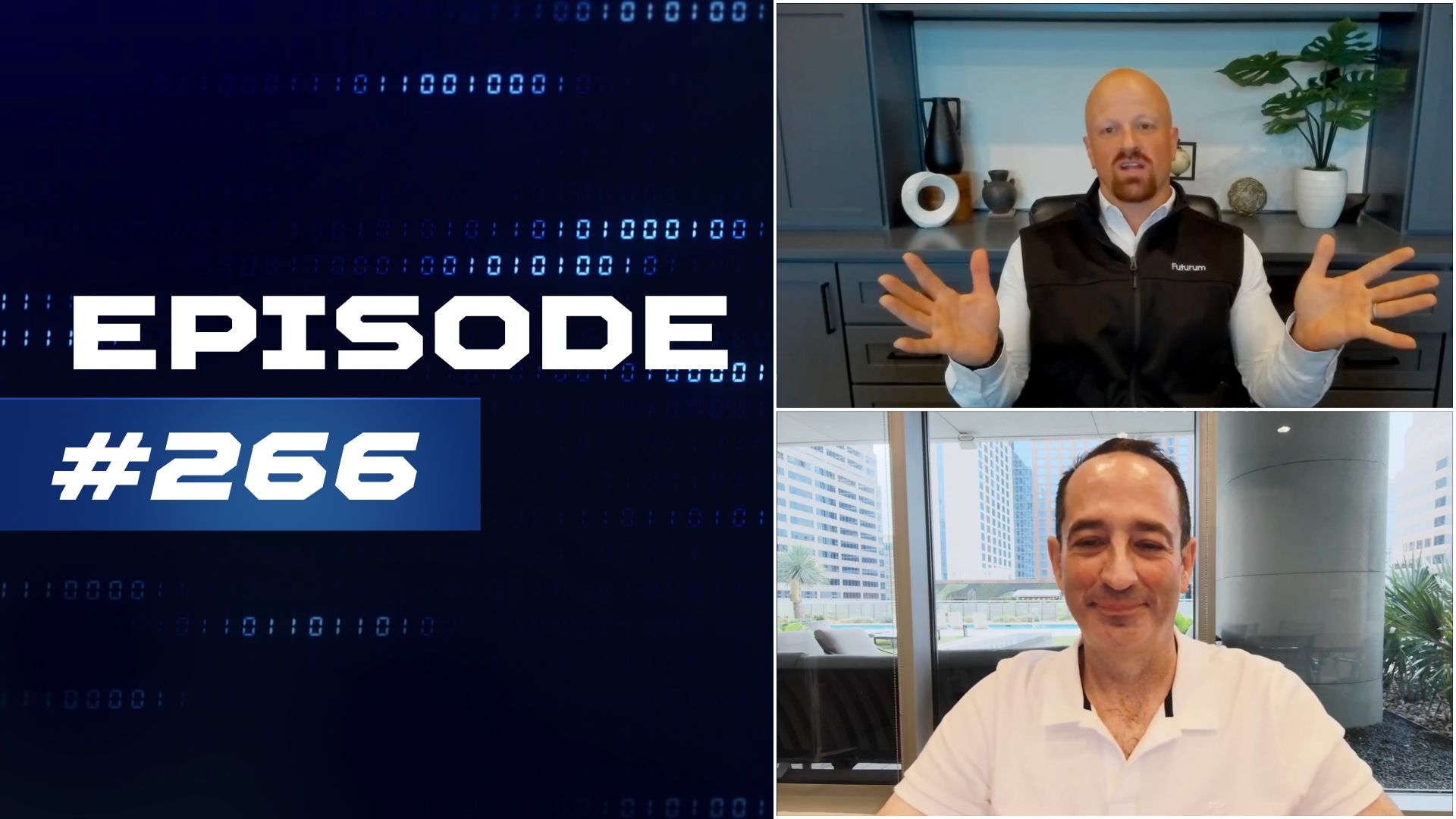
The Six Five Pod | EP 266: Tech Giants' Chess Moves - From Meta's Hiring Flex to Oracle's Cloud Surge
On episode 266 of The Six Five Pod, Patrick Moorhead and Daniel Newman dive into the latest tech news and trends. They discuss OpenAI's talent poaching by Meta, the impact of AI on job markets, and Tesla's robotaxi rollout in Austin. The hosts debate the merits of autonomous vehicles and their potential societal impact. They also analyze recent market movements, including Oracle's $30 billion cloud deal and HPE's acquisition of Juniper Networks. The episode provides insights into the evolving AI landscape, its economic implications, and the resurgence of legacy tech companies in the new era of artificial intelligence and cloud computing.
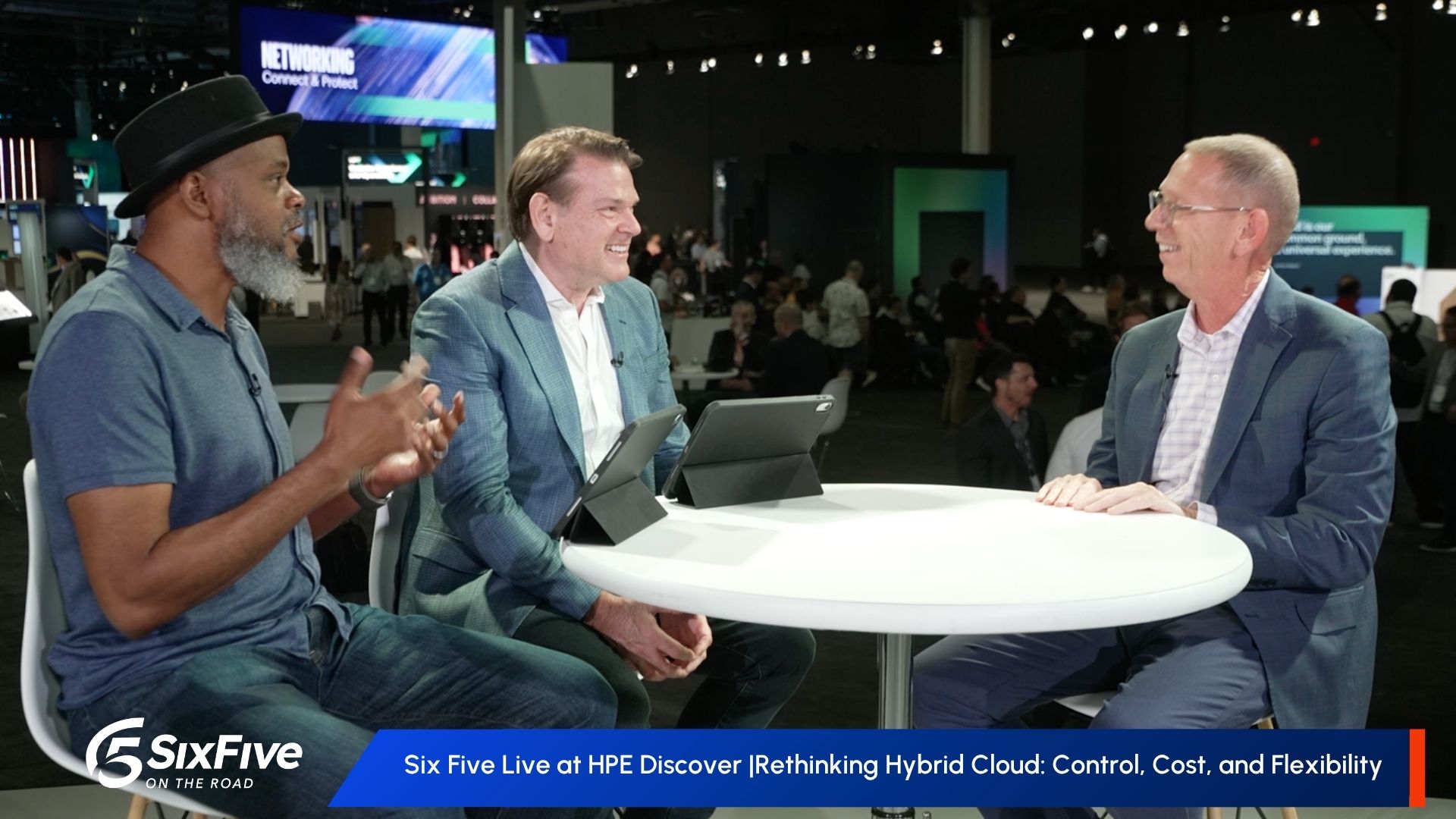
Six Five Live at HPE Discover | Rethinking Hybrid Cloud: Control, Cost, and Flexibility
David Nicholson, Keith Townsend, and Matt Kimball join the Six Five to discuss HPE's advancements in hybrid cloud at HPE Discover 2025, focusing on control, cost, and flexibility. A deep dive into how these initiatives are reshaping enterprise cloud strategies.
Other Categories
CYBERSECURITY
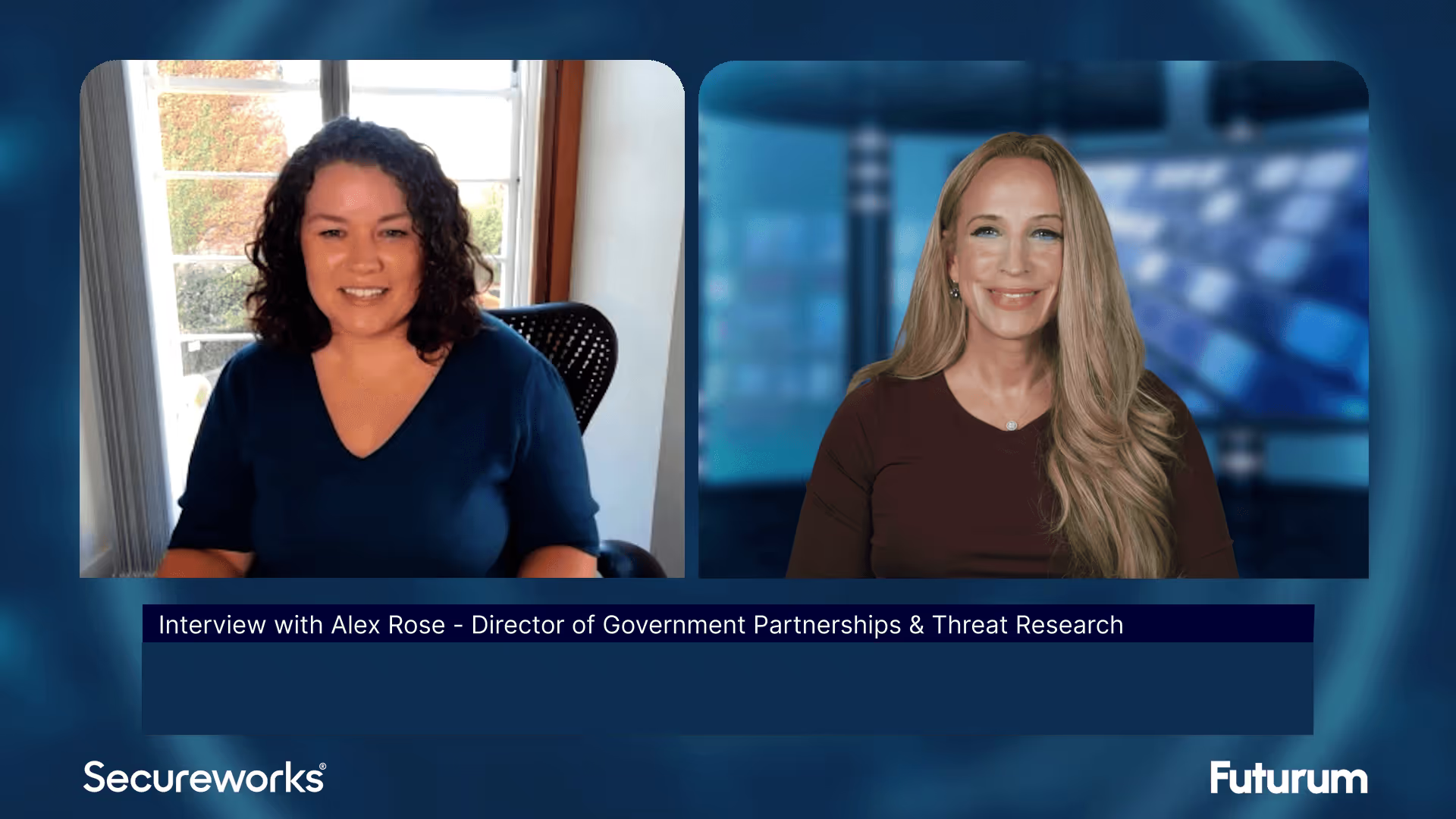
Threat Intelligence: Insights on Cybersecurity from Secureworks
Alex Rose from Secureworks joins Shira Rubinoff on the Cybersphere to share his insights on the critical role of threat intelligence in modern cybersecurity efforts, underscoring the importance of proactive, intelligence-driven defense mechanisms.
QUANTUM
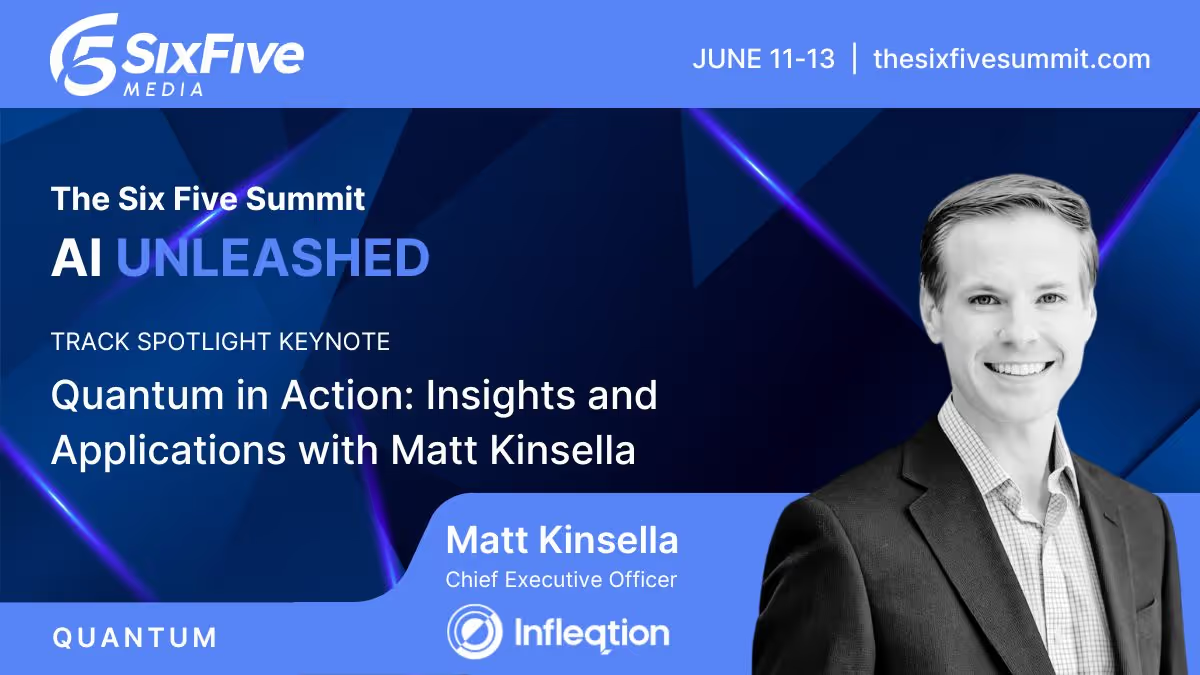
Quantum in Action: Insights and Applications with Matt Kinsella
Quantum is no longer a technology of the future; the quantum opportunity is here now. During this keynote conversation, Infleqtion CEO, Matt Kinsella will explore the latest quantum developments and how organizations can best leverage quantum to their advantage.
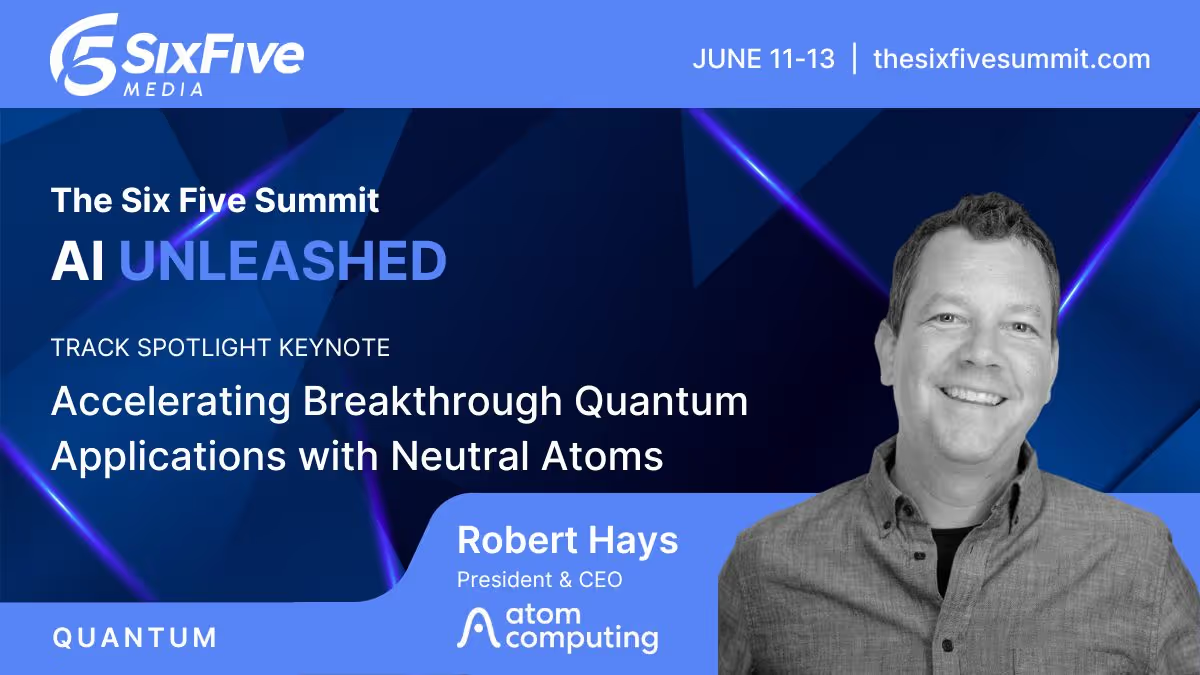
Accelerating Breakthrough Quantum Applications with Neutral Atoms
Our planet needs major breakthroughs for a more sustainable future and quantum computing promises to provide a path to new solutions in a variety of industry segments. This talk will explore what it takes for quantum computers to be able to solve these significant computational challenges, and will show that the timeline to addressing valuable applications may be sooner than previously thought.





